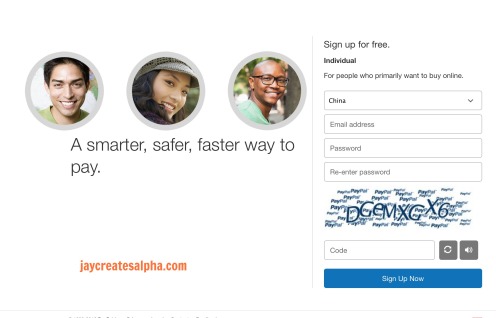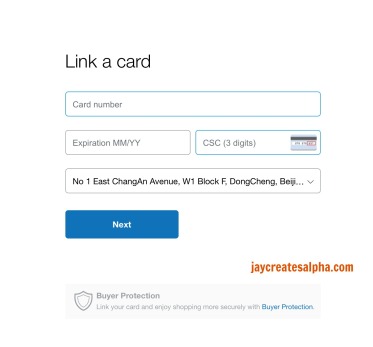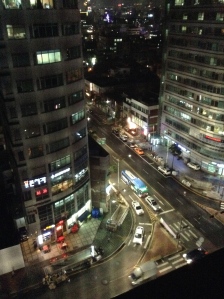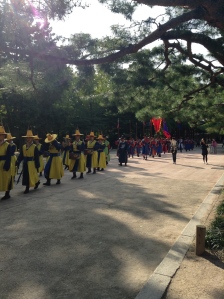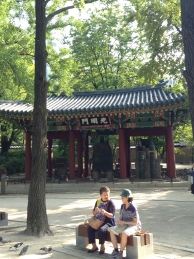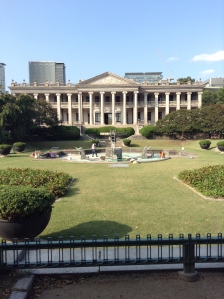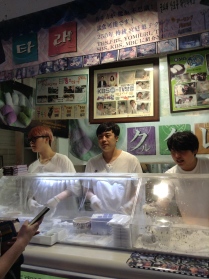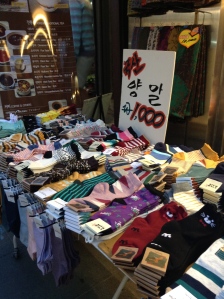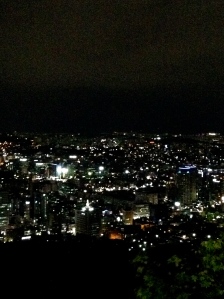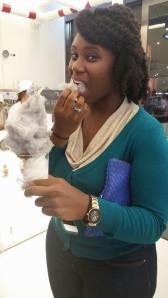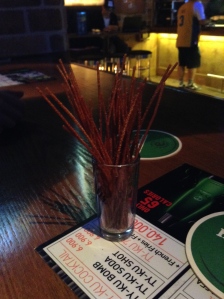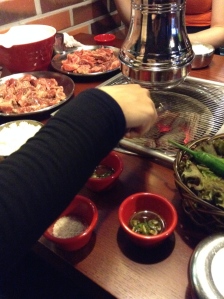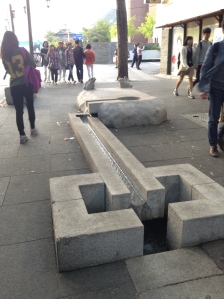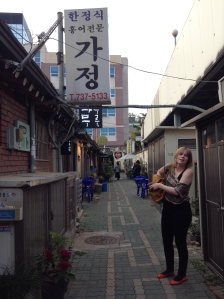Last updated 7/20/2019
Since I’ve left China, I’ve done my best to keep abreast of personal care brands for the African diaspora in the area. As always, do your research — (1) ask about licensing [same are not; it’s your preference] (2) ask about the process and how gentle/tough they prepare hair.
7/20/2019:
Beijing Barbers/Salons:
- The Chasers barbers – WeChat ID: @deXtacyHustle
- Classic/Custom Cutz by Adrian – WeChat Group Name: “Classic Kutz by Adrien”
- Paulma Salon in Sanlitun SOHO is still open.
- Eden Salon
- Fidele – WeChat ID: @seigneur0086
- MiraPages – WeChat ID: @Mi112ra
Other cities (including Beijing): Screenshots from “Brothas & Sistas of China” Facebook Group – has extensive lists of people who can do afro-textured hair (click the pictures to see full list of cities and info):
03/2016:
Sonaki water filters have been recommended by an African American expat for washing hair & bathing in China. She says it helped with her hair shedding & dandruff caused by the water here. 🙂
Original Post:
What’s wrong with China? Nothing at all, but if you have fine or dry hair (like mine, esp being of African-American descent), it can be quite a challenge to maintain even in tier-1 cities like Beijing, Shanghai and Guangzhou. These cities have dramatically transformed over the last few years in terms of their international offerings. Still, curly hair care needs haven’t yet quite received all their solutions, so I’d like to share what’s available, what you need to bring, and the hair changes to expect. Just want to know where to get your hair done/cut? Looking for hair & beauty supply retailers? [See: Salons/Barbershops portion at the end of post]
I’m moving to China… should I be relaxed or natural?

As with everything, it’s totally up to you. Here’s the rundown:
Relaxed: There are a few salons here that offer relaxing services for about 200 – 1200 rmb ($35 – 200 USD), and of course you can find black girls around town willing to do an at-home relaxer for a lower price (and possibly a better range of product options bc they brought the products from home themselves). Have I seen any girls around here with healthy-looking relaxed hair? At least not in Beijing (the climate is EXTREMELY dry and there’s a lesser amount of hair care options), but if you’re living in Southern China, it may be more feasible to maintain.
Natural: Over 90% of the women I meet in Beijing and around China are natural, or wear extensions as a means of style in China. Quality and range of hair products varies in salons in China since its a little expensive to import items from USA & Africa for such a small population. All of the salons offer services for natural hair, as aforementioned, black expats are also willing to do each others hair. Depending on your city, you might not be able to find a stylist that you like and is located in or nearby your city, so for feasibility it may be easier to go natural in China, as many do.
What hair products & tools do I need to bring from my home country?
Everything you can. As much as will last you until your next flight home.
My personal list: 1. Organix Coconut Milk Anti-breakage serum, 2. Suave Professionals Sleek Conditioner (for dry / frizzy hair), 3. Suave Professionals Keratin Infusion Smoothing Shampoo ( frizzy / unmanageable hair), 4. Eco Styler Gel, 5. Shea Moisture Curl Enhancing Smoothie, 5. Almond Oil, 6. Tea Tree Essential Oil.
But… if you’re limited on weight (or are having a friend bring some on their next flight here), here are the absolutes:
Conditioners (especially deep conditioners). Heat protectant. Higher temp, ionic flat irons. Speciality hair care brands such as Shea Moisture, Mizani, Giovanni (it’s available here but much more expensive), Dark & Lovely natural hair products, Cantu, etc. Coconut & Argan oil.
Other basic oils can be found on Chinese websites such as Amazon.cn, Tmall, and grocery stores. As your social network expands, you’ll find WeChat groups where some individuals sell these items themselves. MadameShea (on WeChat) makes & sells her own shea butter products, including an anti-breakage & edge repair product.
[MadameShea Edge Repair: Natural, feels good in hair, but the scent is a little old-fashioned lavender so that may be a turnoff. Only 48 RMB ( 8 USD), including shipping, for a 30 ML canister]
My bathroom hair cabinet (I have two other boxes of products in another):

Are hair products for ethnic hair textures available in China?
Yes, in limited supply.
Online:
WeChat ID: MadameShea; this company, based out of Nanjing, has recently extended their line and now offer a variety of hair care & styling products for a reasonable price.
WeChat ID: Sistasista; Sells hair, beauty & jewelry supplies for men and women. Also hosts beauty events.
Beijing (Tianjin) & Shanghai (Jiangsu Province):
Paulma Salon has (limited) items available for sale. Mostly Dark & Lovely and Pink Hair products.
Fidele’s Salon: Although in limited quantity, she has a variety of different hair products for sale in her salon. Call: 137-1877-4103. Located in Dongzhimen area.
Guangzhou: The little Africa area of the city has small shops run by Africans that have some imported products. I’ll update this post if I can ascertain exact addresses. [Mostly word of mouth]
Individuals that bring extra and small businesses that have them available for sale. Contact me at WeChat ID: shandianxia28, and I can share the name cards of people with products.
Shenzhen/HongKong: Allie has products available & hosts hair events. Contact via WeChat: soulangelbeauty
What alternative items can I use for my ethnic hair that are already available in China?
My personal list: Syoss deep conditioners & masks. Grapeseed & Olive Oil. Madame Shea edge repair.
Asian hair tends to be more oily, so their standard moisturizing conditioners aren’t enough for African, African-American, mixed hair types.The deep conditioners are okay, and of course, natural oils can be found in stores & online shops.

Are there salons/barbershops where I can get my hair texture taken care of?
Disclosure: This is informational, not promotional. Do your research. Make sure you ask plenty of questions, re-confirm the procedure, and make sure they handle your hair gently. Most of the salons cater to men for haircuts & styling.
Beijing & Tianjin:
Paulma Salon: Sanlitun Soho Building No. 5, 5th floor 532 北京市朝阳区三里屯SOHO 5号楼532, Contact: DJClaude via WeChat: OJEY11. Speaks English, Chinese & French.
Beauty Blendz: Taiyue Suites, 16 Sanlitun Nan Lu (by Chaoyang Hospital East Gate), Chaoyang District, Beijing 北京市朝阳区泰悦豪庭酒店 南三里屯路16号楼3层307
**The address is a little difficult to find. Better to search “TaiYue Suites (泰悦豪庭酒店)”
Fidele: Dongzhimen DRC, building 10. Call Fidele at 137-1877-4103 for better instructions. Speaks English & French.
Natho Beauty Salon: Contact WeChat ID: Nathobeautysalon
Catherine de France 法式美容美发沙龙: (Not a black salon, but some of her stylists can do certain curly textures — be sure to have a consultation first)
East Avenue Building Ground Floor
10 Xin Dong Lu, Chaoyang District, Beijing
北京市朝阳区新东路10号逸盛阁首层
Leader’s Salon: Ask for Ahmed, the barber. He also does eyebrow threading for women. Sanlitun SOHO Building No. 3, 1st Floor, 138 北京市朝阳区三里屯SOHO 3号楼138
Mama Money Beauty Shop: Tianjin. Contact: 138.2090.1970 or 151.2210.8387
Shanghai:
Paulma Salon: Hectometer Champs Elysee 2nd floor 228, 上海市广西北路228弄
[SN: Beware of a group that offers a tea ceremony in this mall. it’s a scam]
Studio Ebony: Bldg 14, 133 Maoming Lu,
near Changle Lu 茂名路133号14号楼, 近长乐路 [Closest to metro stop Shanxi Rd S]
PavoPelo by India: Contact India Mejia at WeChat ID: ShearxxxGenius
Guangzhou:
(word-of-mouth) If you call the Mali or Senegal consul offices in Guangzhou they’ll happily direct you to a stylist in the African section of the Guangzhou International Beauty Market.
Shenzhen:
Feb 2019: tchungsmith7 (does locs)
David (barber): WeChat ID: kingblu55
Other places: You can: (a) travel to a tier-1 city, (b) look for a local black person who can style you in their home, (c) try your luck at a Chinese salon and teach them how to care for your hair type.
I heard the air pollution & water quality is terrible for hair – what can I do?
Do not wash with the water, if you can help it. Personally, I’m lazy, so I do wash with the tap, but my final hair rinse is with a gallon of bottled water from a pure source. The air pollution may not directly affect your hair, but internally it lowers the quality of your overall health, thereby indirectly lowering the quality of the new hair that’s growing.
Most expats complain of extremely dry & hardened hair, primarily due to the water, which is why I recommend bringing deep conditioners from back home.
If you have highlighted hair, it’s even worse. I spent my first year in China sans highlights, my second year, with highlights. When I was au naturale, I noticed my hair texture was not as smooth, had more tangles and was a disaster upon rising from bed (I never picked up the scarf wearing habit). After highlights, my curl pattern loosened so that helped with the bed head, but when I wash & comb, I have huge clumps of hair that come out. Only after switching to bottled water washing, daily spritzing of an oil-moisturizing cream-water mixture, deep conditioning each week, and stretching (vs blow drying) my hair has begun to thrive. Luckily, it’s still at bra strap length, so not too much damage. Hope this helps!

Social networking groups for hair care in China?
Yes, add my WeChat ID: shandianxia28, and I can send the name cards.
Travel, flourish & finesse.




